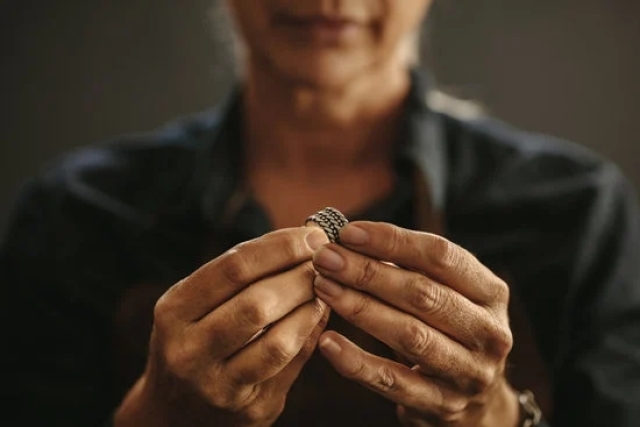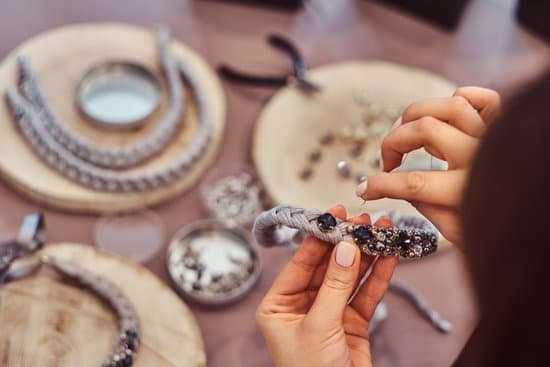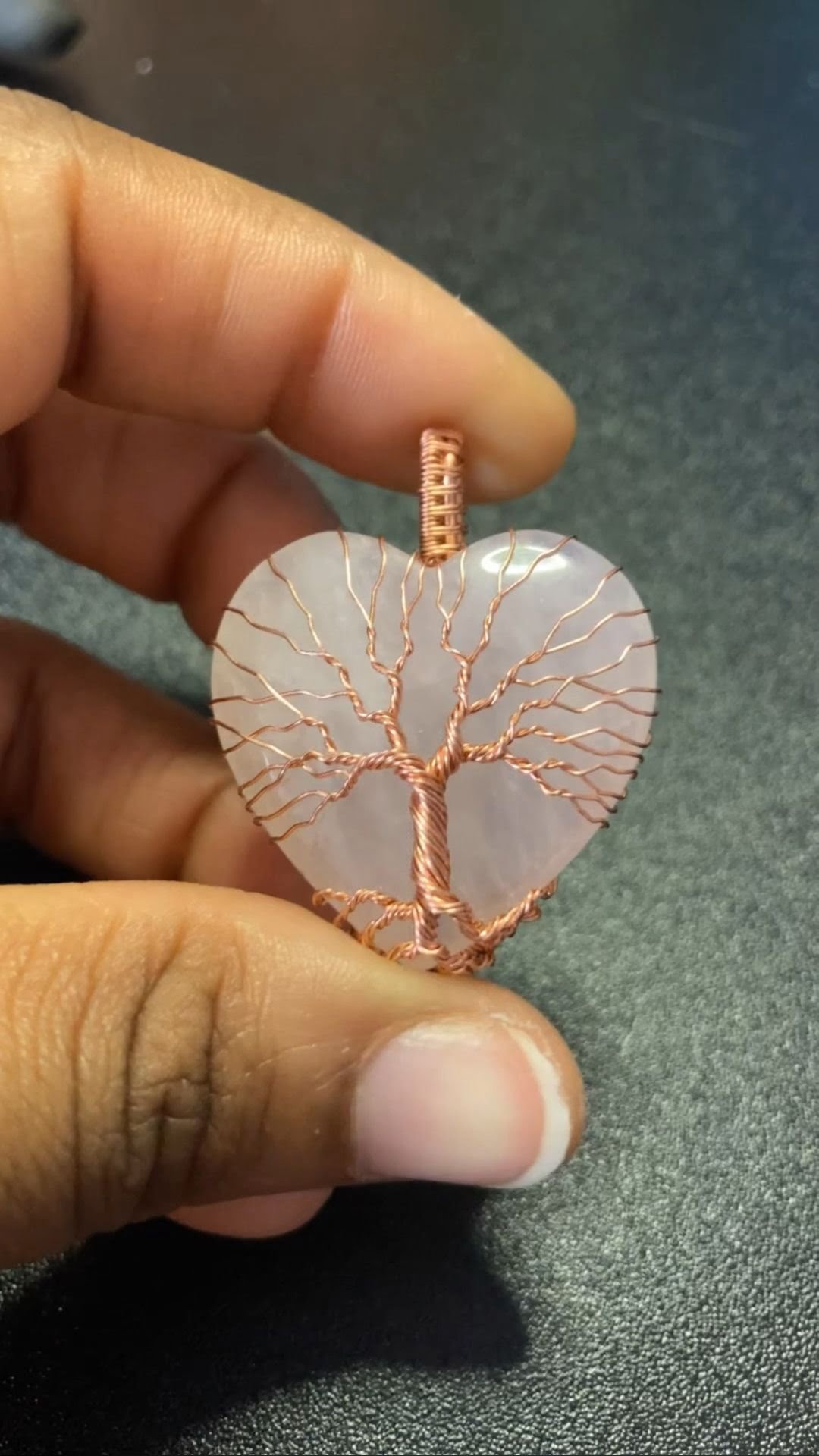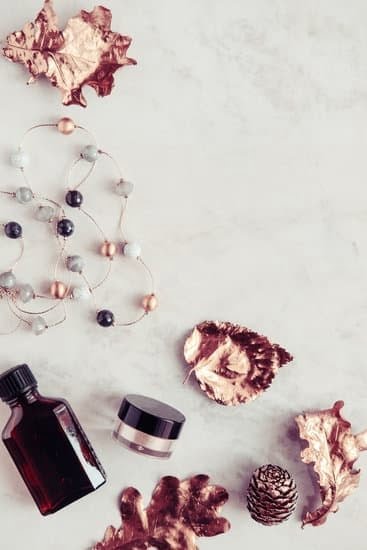Cleaning alloy jewelry is a relatively simple process, but one that should be done with care to ensure optimum shine and longevity. Alloy jewelry is typically made up of two or more metals combined together in order to create a new metal.
It doesn’t require the same amount of expense as precious metals, like gold and silver, while still providing a nice touch of sparkle from the alloyed elements it contains. The fact that the material isn’t expensive also means it needs to be taken better care of to enhance its beauty over time.
To properly clean alloy jewelry, begin by inspecting it for any residue that may be dirtying it – this often includes dirt, dust, oil residue from hands, and other foreign substances. If these are found then remove them with a soft cloth by wiping gently, using the same circular motion throughout for an even polish.
Move onto removing tarnish by creating a paste or solution from baking soda and water – this paste should be applied directly onto the jewelry before being rubbed with the cloth until all signs of tarnish have been removed. Finish off by rinsing with several changes of cold water until all traces of the paste are gone.
Once cleaning is completed, apply a new finish if desired; such as buffing out dulled areas or polishing certain specific spots on your jewelry-using an appropriate metal polish-is possible without compromising authenticity or integrity of alloy finishes such as antique or organically weathered products.
A final step is to then seal the newly applied finish with a wax coating spray which will help protect against further environmental damage as well as wear and tear during daily use activities like taking off/putting on jewelry pieces multiple times throughout each day or when different makeup application procedures occur (such as when using strong polish removers).
Overall, by following proper cleaning instructions outlined here you can easily maintain beautiful alloy jewelry for years to come. With routine maintenance and lots of love many pieces can last lifetimes – so don’t miss out on making sure your special accessories stay just “like new” forever.
Different Tools & Supplies Needed for Cleaning Alloy Jewelry
When cleaning alloy jewelry it is important to choose the correct tools and supplies. Here are some of the common items that can be used:
- OLD, SOFT toothbrush – This will be used to clean around the edges of your jewelry piece.
- TOWEL – This will be used to protect delicate pieces or those with sensitive surfaces.
- MILD soap – A mild soap like Dove or Ivory can be used but not harsh detergents like bleach or ammonia as they could damage the finish of the piece.
- Warm water – Use warm water and avoid hot as it could cause discoloration or shrinkage in some materials.
- POLISHING CLOTHS – Polishing cloths can help bring back some luster to alloy jewelry and remove tarnish from silver alloys.
Before starting, make sure to read the instructions on any items you will use for cleaning so that no damage is done to your pieces. It’s also a good idea to test a small section first before using a cleaner on an entire piece. With these basic components, it’s easy to restore any dulled pieces in no time at all.
Cleaning Alloy Jewelry: The Steps
The most important part when it comes down to properly cleaning alloy jewelry is taking into account the specific type of alloy material you are working with. Different alloys react differently depending on what elements have been included in their formulation. Generally speaking, most alloy materials can be handled with warm soapy water when cleaning gently with a soft bristle brush.
Make sure vigilance is taken when dealing with any sensitive surfaces that may easily scratch. If there is no instruction manual that states otherwise, follow these simple steps below:
- Step 1.: Place your jewelry item in some warm soapy (mild) water for about 10 minutes before beginning any scrubbing action. This helps loosen up dirt and debris that may have collected over time as well as removing oils and residues from handling;
- Step 2.: Using an old and soft bristled toothbrush, begin gently scrubbing away at any buildup metal oxide layer(s) if needed – however don’t go too aggressive at this point as certain areas may contain fragile stones;
- Step 3.: Take out towel and dab dry any excess moisture left on your jeweler item once finished;
Various Methods for Cleaning Alloy Jewelry
Alloy jewelry is a popular type of jewelry because of its affordability and durability. While alloy jewelry isn’t as delicate as silver or gold, it still requires some maintenance to keep it looking its best. There are many methods used for cleaning alloy jewelry, each with its own pros and cons.
Pros And Cons Of Various Methods
- Soap and Water: This is the most basic method of cleaning alloy jewelry – just mix a few drops of mild dish detergent with warm water, then dip the item into the solution and gently scrub with an old toothbrush. Pros: Easy to do at home; safe for most alloys. Cons: May not work well on tarnished metal; takes some time.
- Cleaning Cloths: These special treated cloths are available in many retail outlets selling metals or polishing materials. Pros: Removes dirt without damage or scratching; easy to use without worrying about damaging your piece. Cons: Some versions may contain harmful chemicals
- Commercial Jewelry Cleaner Solution: A gentler form of aluminum-free cleaner formulated specifically for cleaning jewelry is now available in many stores offering fine jewelry accessories. Pros: Safe to use on gemstones and other delicate components; cuts through tarnish quickly and safely. Cons: Can be expensive but usually worth it.
Additional Tips For Cleaning Alloy Jewelry
In addition to using one of these methods, there are some other helpful tips for keeping your alloy jewelry sparkling clean throughout the year –
- Always check product labels for instructions before attempting to clean any metal item.
- Don’t wear costume pieces swimming or when exposed to harsh chemicals, such as chlorine bleach.
- Store items separately in a cotton-lined box or soft pouch to avoid scratches and bums when kept together.
- Spray lacquer can be used to preserve the finish of iron-bearing alloys.
How to Clean Glossy Alloy Jewelry with Professional Products
First and foremost, you need to select products that are suitable for your type of alloy jewelry. Most glossy alloy jewelry can be safely cleaned using specialized polishing or as exceptional jewelry cleaner & polish. Here we’ll explain how to safely remove dust and dirt from the surface of glossy alloy jewelry.
- Gather supplies like a soft cloth, jewelry cleaning solution, gloves, and a bowl.
- Put on the gloves and pour a small amount of the cleaner into the bowl.
- Dip the cloth into the cleaning solution and gently rub away any dirt or grime from the surface of the jewelry.
After scrubbing off all dirt, place the piece in lukewarm water for 10-15 minutes than use a soft brush to clean off any remaining residue. Make sure you rinse off the entire area thoroughly with clean water afterward. With this it will restore its shine. It’s vital to ensure that all dirt is removed before attempting to polish or repair any scratches on your alloy jewelry item.
- Dip a cotton swab in some liquid soap and run it around difficult areas if needed.
- Dip a soft cloth into some professional jeweler’s Polish paste & gently wipe over your piece as you inspect it under adequate light.
- Apply some beeswax over identified tarnished regions & buffer with another piece of cloth until desired level of shine is achieved.
Ultimately, keep in mind that polishing alloy requires intense efforts so practice caution & gradually work your way up with mild abrasion methods – gentle but thorough short strokes-for optimum shine without damaging its embedding components such prongs& clasps containing stones while proper maintenance will mitigate possibilities of loss due to mishandling inappropriate products.
How to Clean Matte Alloy Jewelry with Natural Products
Keeping matte alloy jewelry looking its best can be done with natural products that many of us already have in our cupboards. Concerns about the use of harsh chemicals and other commercially available cleaners are addressed when using only natural items for the cleaning process.
The following steps outline how to clean matte alloy jewelry with natural products:
- Mix one tablespoon of lemon juice with two tablespoons of baking soda in a small bowl.
- Dip a soft cloth into the mixture – avoid brushing or scrubbing as this may scratch or damage the surface.
- Gently wipe away any dirt, dust and grime.
Due to its antibacterial properties, white vinegar is another great natural product which can be used to clean matte alloy jewelry. A solution made up of one part white vinegar to four parts water can be dabbed onto a soft cloth and used to remove any dirt that may have built up over time.
If there is still some residue remaining after wiping with either method, then it may be possible to remove this by soaking the item overnight in warm water before repeating the above steps.
Safe Household Items to Use for Cleaning Alloy Jewelry
Alloy jewelry is becoming increasingly popular as it combines both the look and affordability of precious metals. While alloy jewelry can be great for people who don’t want to invest in more expensive pieces, due to its composition, it requires special care when cleaning. Here are some safe items which you can use at home to keep your alloy jewelry looking its best:
- Vinegar and Water Solution: For tougher stains, try making a 1:1 solution of white vinegar and distilled water. Soak your piece overnight and then brush gently with a soft toothbrush.
- Baking Soda and Water Paste: To buff away scratches or even out discoloration, mix baking soda with distilled water to create a paste. Apply it to the affected area leaving it for a few minutes before polishing away with a cloth or brush.
- Bar Keepers Friend: This can be used on all (non-jeweled) areas of the alloy jewelry, helping get rid of tarnish, grime and fingerprints. All that is required in light scrubbing with an old toothbrush using lukewarm water.
- Jewelry Polishing Cloth: These special cloths contain chemicals which helps restore luster without scratching the jewelry’s outer surfaces. Use gentle back-and-forth motion when rubbing against the surface.
It is important not to attempt any kind of harsh scrubbing when dealing with alloy jewelry; most pieces contain lots of delicate details which can easily been damaged by excessive force or exposure to strong Chemicals such as ammonia-based products or bleach. Also be sure that no two pieces are ever put together while cleaning them; this can cause scratching either one or both of them.
Professional Jewelry Cleaners Available and Cost Comparison
Cleaning alloy jewelry can be a time-consuming process when it needs to stay looking its best. If you’re looking for an easier method, there are three types of professional jewelry cleaners available for purchase. These include ultrasonic cleaning, steam cleaning and laser cleaning. Depending on how often your jewelry needs to be cleaned and the type of alloy it is made from, each approach will have different benefits.
- Ultrasonic Jewelry Cleaner: This type of cleaner uses high frequency sound waves that vibrate and move through water to agitate dirt particles away from the metal and non-porous surfaces. The ultrasonic waves are especially effective at removing old residue that traditional cleaning methods just can’t reach. It’s an ideal choice when deep cleaning is required. Cost-wise this method is the most expensive, with typical models ranging in price from $100-$500.
- Steam Jewelry Cleaner: This cleaner uses plain tap water which is heated up into a vapor form to loosen up dirt deposits or damages that won’t come off through normal brushing alone. This can also be very effective on greasy or oily deposits without the corrosive nature of other solutions such as ammonia or vinegar. Cost wise they range from around $50 – $100 depending on features such as adjustable temperatures and timer options.
- Laser Jewelry Cleaner:. This type uses focused light energy directed at a small area of the surface being treated targeting only dirt particles without affecting metals or jewels in anyway. Cost wise these models range from around $100 – $200 making them an affordable option for those wanting a clean finish without risking damage to the piece.
Each professional jewelry cleaner has its own pros and cons according to what you’re trying to accomplish with your piece so it’s important to weigh each method carefully before deciding which one best suits your needs when considering cost, performance, safety and convenience factors.
Conclusion
Regularly cleaning alloy jewelry comes with numerous benefits. Not only does it give the piece a renewed shine and radiance, but it helps to remove any dirt that has built up on the surface of the jewelry. This helps to keep it looking beautiful and radiant for longer periods of time.
It also helps to prevent bacteria from getting into the jewelry, which can cause tarnishing. Alloy jewelry is durable and generally stands up against daily wear and tear, however regular cleaning sessions can provide additional protection against general scratches and bumps that may occur in day-to-day life.
Additionally, when alloy jewelry is properly cleaned after being worn for a period of time, you may be able to see small imperfections or damages that would otherwise remain hidden until further down the line. Identifying them early allows you to replace or repair them right away rather than waiting until more damage is done before any action is taken.
Depending on the material used for the repairs this could save money overall as more aggressive measures won’t need to be taken in order restore its original shine and sparkle.
In conclusion, regular cleaning sessions are an essential part of keeping your alloy jewelry looking beautiful for long periods of time. In addition to providing aesthetic value, they also act as preventative measure against bacteria growth and tarnishing that could occur from everyday contact with outside elements such as sweat, dirt, moisture and oils found on our skin.
As previously stated seeing any minuscule scratches or damages early on allows you to take as little action necessary in order to get your jewelery back into its original condition without having bearing heavily on your wallet either – making it an all-round win situation.

Welcome to my jewelry blog! My name is Sarah and I am the owner of this blog.
I love making jewelry and sharing my creations with others.
So whether you’re someone who loves wearing jewelry yourself or simply enjoys learning about it, be sure to check out my blog for insightful posts on everything related to this exciting topic!





